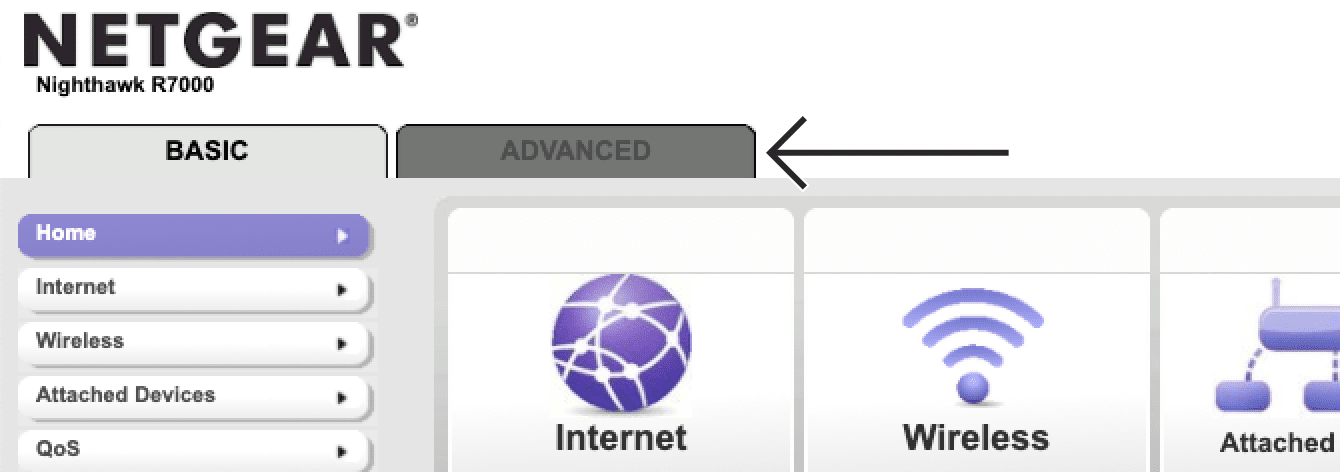

- #CHANGE ROUTER MAC ADDRESS NETGEAR HOW TO#
- #CHANGE ROUTER MAC ADDRESS NETGEAR INSTALL#
- #CHANGE ROUTER MAC ADDRESS NETGEAR 64 BIT#
- #CHANGE ROUTER MAC ADDRESS NETGEAR REGISTRATION#
- #CHANGE ROUTER MAC ADDRESS NETGEAR PASSWORD#
The R7000 will automatically create the configuration files you need to connect to your home network using OpenVPN. ] Step 5: Download and Copy the OpenVPN Configuration Files If on Windows, head to the Control Panel -> Network and Sharing Center -> Change Adapter Settings and rename the newly created network device (likely named TAP-Windows Adapter) to NETGEAR-VPN. Step 4: Rename the VPN Network Device (Windows Only) Once downloaded, go ahead and follow the prompts to complete the basic installation on your machine.
#CHANGE ROUTER MAC ADDRESS NETGEAR 64 BIT#
Here, you can grab the client appropriate for your device in my case, 64 bit Windows. The R7000 provides a handy link right there on the VPN settings page to use, which should bring you to the download page for the OpenVPN project. Now to download the client that you will use on your remote device in order to connect to your OpenVPN network.

#CHANGE ROUTER MAC ADDRESS NETGEAR INSTALL#
] Step 3: Download and Install the OpenVPN Client I highly recommend you set up dynamic DNS as shown in step 1 to avoid this! If you didn't complete dynamic DNS setup, a warning box will be shown to alert you that a new configuration file will have to be downloaded every time the IP changes. Simply navigate to Advanced Setup -> OpenVPN, check the box, and click Apply. The next step is to enable the integrated OpenVPN support on the router. You'll be able to tell if dynamic DNS is updating successfully via the screen shown above.
#CHANGE ROUTER MAC ADDRESS NETGEAR REGISTRATION#
You'll be whisked away to a registration process, then receive a verification email, after which you should be good to go.
#CHANGE ROUTER MAC ADDRESS NETGEAR PASSWORD#
Put in a username and password and click away. Under Advanced Settings -> Dynamic DNS, either input your existing Dynamic DNS information - or, if you don't have one, you can open one right from your router. Fortunately, NETGEAR has made this ridiculously simple. This first step ensures that your OpenVPN clients will be able to connect without having to reset the connection settings from time to time due to changing IP's. So, sound good? Ready to get started? Step 1: Open a Free No-IP Dynamic DNS Account Plus, it's protected by OpenVPN, which is renowned for its safety and security. It works differently than a program that simply gives you remote access to the desktop it actually brings the client computer into the network remotely, placing network drives and devices directly in the file explorer - as if you were on your network at home. OpenVPN allows users to connect to their home network securely from virtually anywhere, on any device that an OpenVPN client is available. The R7000 makes it extremely easy to not only get a free dynamic DNS address but also to get the OpenVPN clients up and running. These two features work together to provide a secure gateway to your home network from anywhere, allowing you to access files, stream network resources, and more - all through a rock-solid OpenVPN connection. Plus, it's packed with features, and one of them that I'm betting many users might not even know about is it's built in OpenVPN and DynamicDNS support. A MAC address consists of six groups of numbers or letters arranged as such, D4-FB-6A-7C-31-B4 (just an example.) Once the MAC address has been changed, it will remain as your router’s primary MAC address until you revert the router back to its default factory settings.If you have an R7000 Nighthawk router, be proud: it's one of the most, if not the most, powerful router on the home market today. It should be clearly marked.Ĭhange the MAC address to anything that suits your fancy, so long as it follows the proper format. Navigate to the wide-area network (WAN) settings page or a similar settings page (each router may be different.) Once there, look for an option to change the MAC address. If you are lost, check the instructions that accompanied your router. Check your devices to make sure you can get online.Īccess the router’s admin panel via a web interface (browser address bar) or by opening up dedicated firmware software. Make sure your Internet is connected properly, ensuring that the Ethernet cable is going from the modem to the router and that there is an available wireless connection for connected devices.
#CHANGE ROUTER MAC ADDRESS NETGEAR HOW TO#
Luckily, this is not an overly difficult task and certainly not as frustrating as, say, learning how to disable IPV6 on a router. When you revert your router to its default settings, the MAC address will also reset to the original setting.


 0 kommentar(er)
0 kommentar(er)
